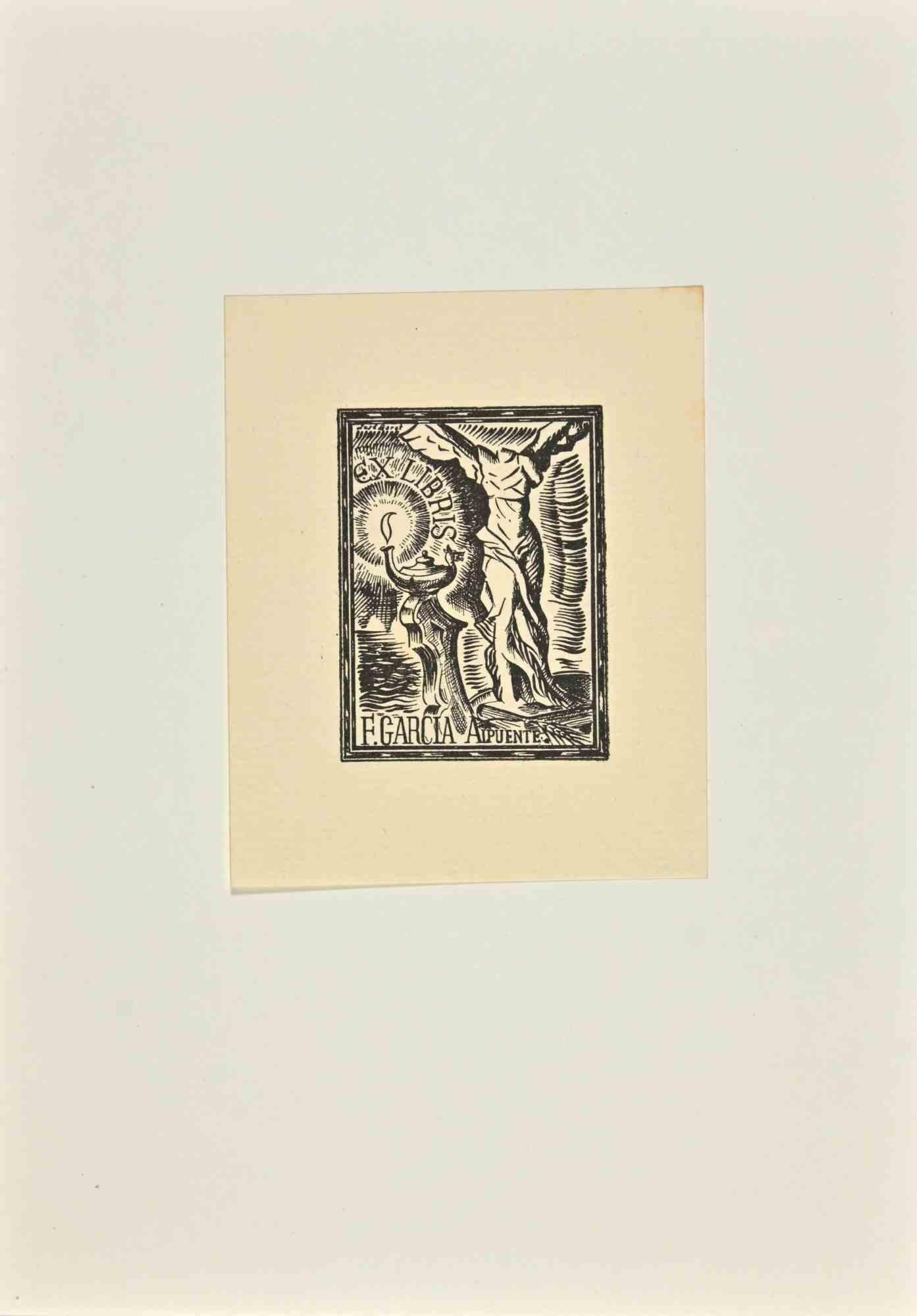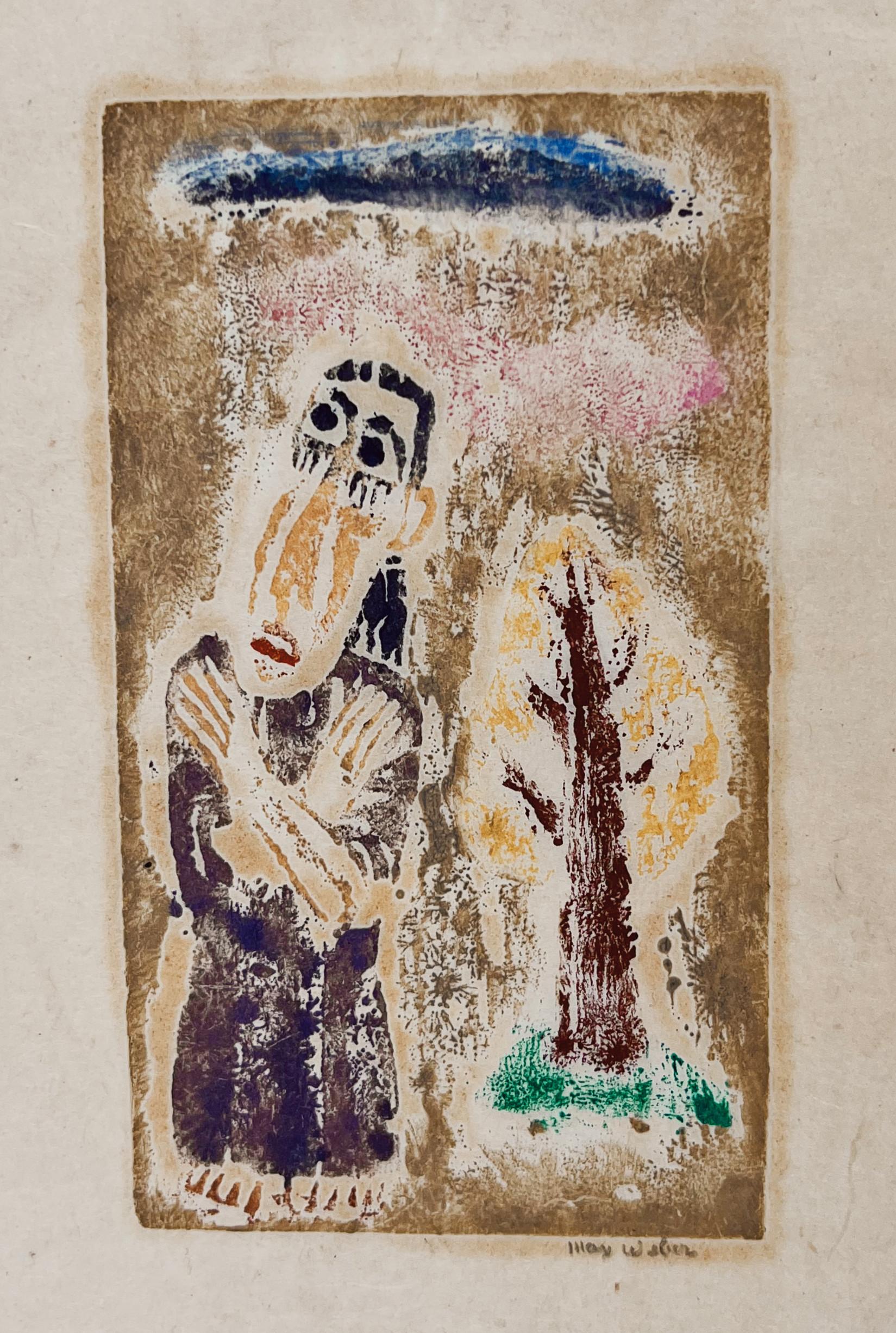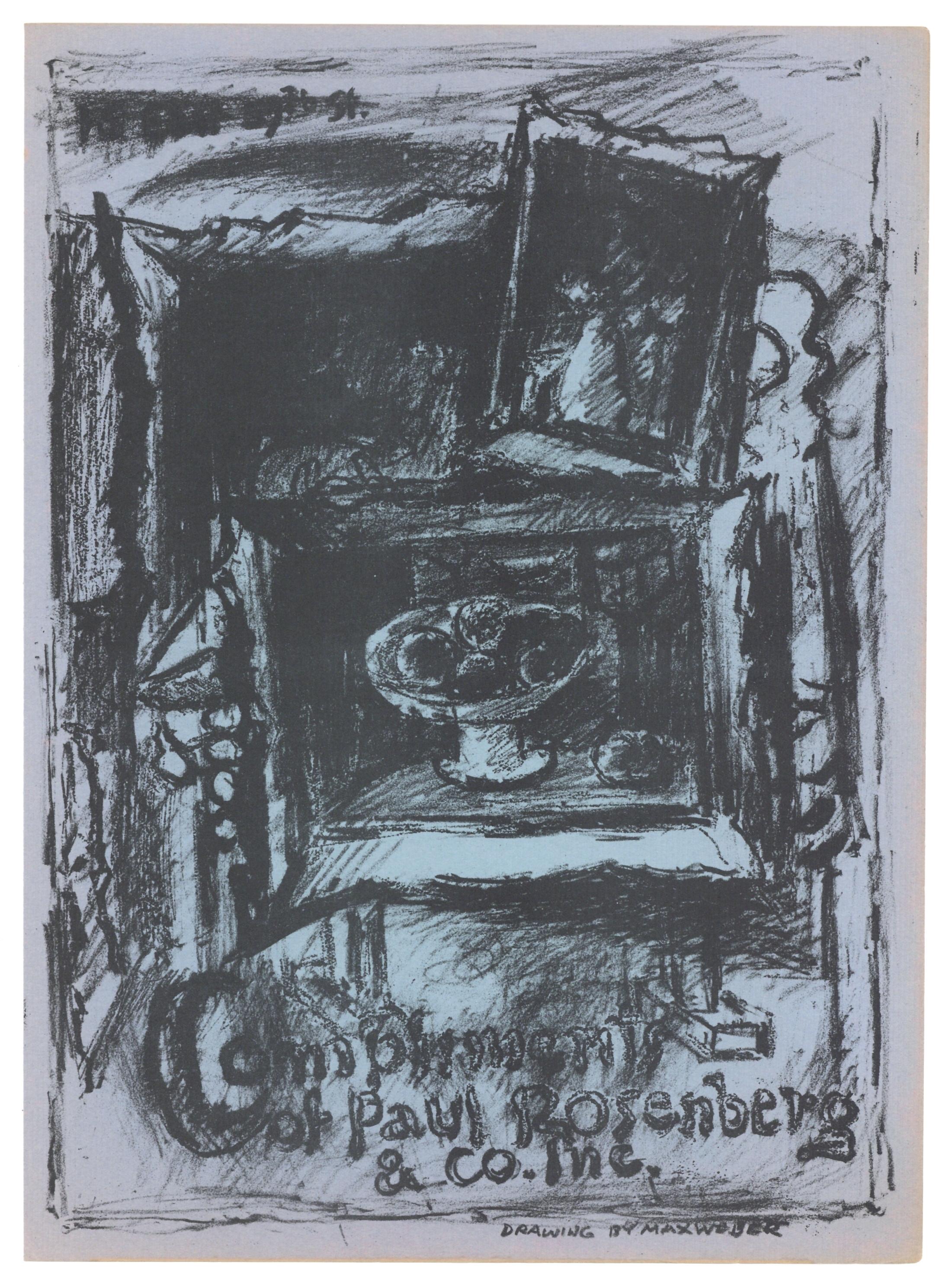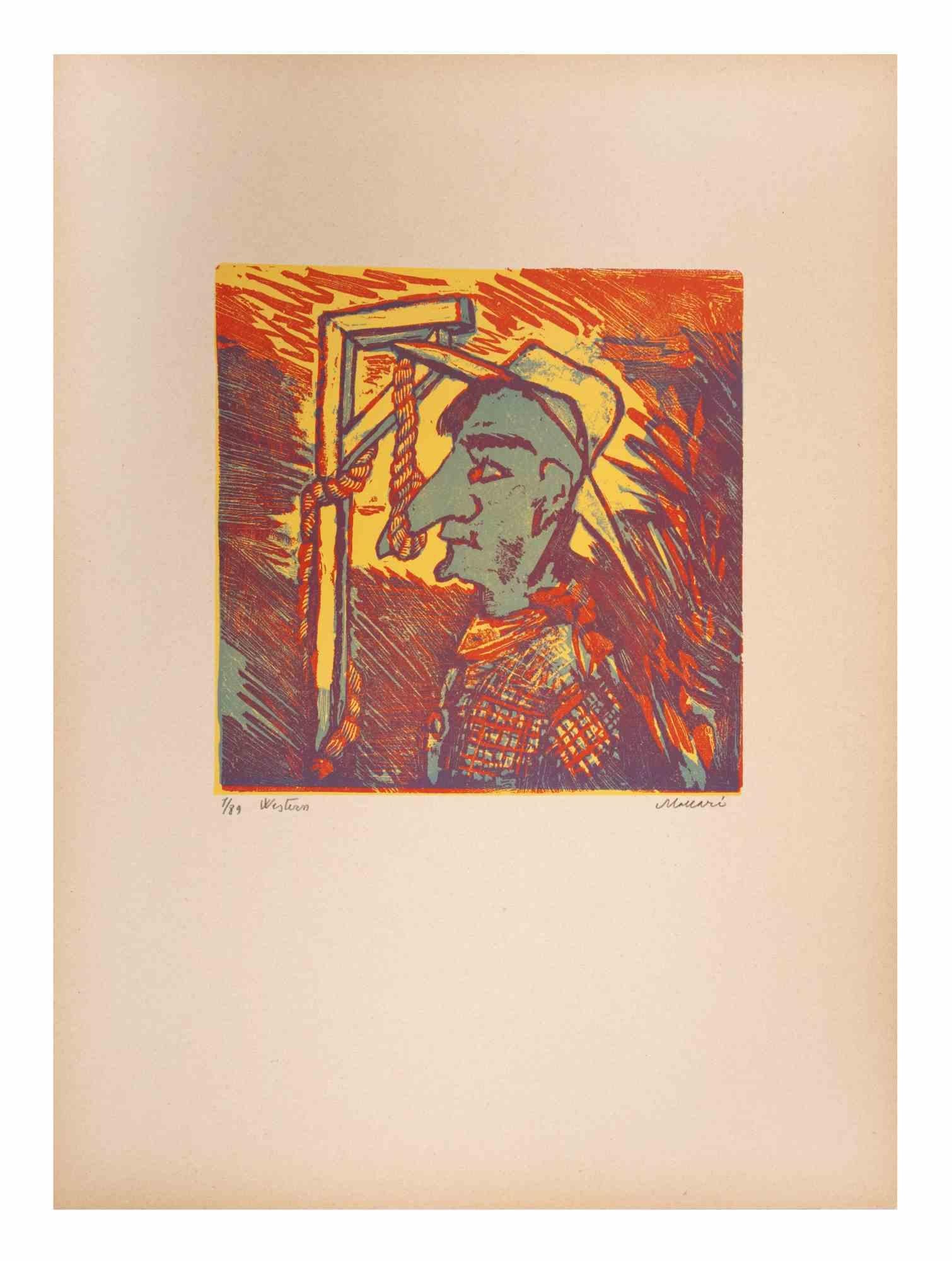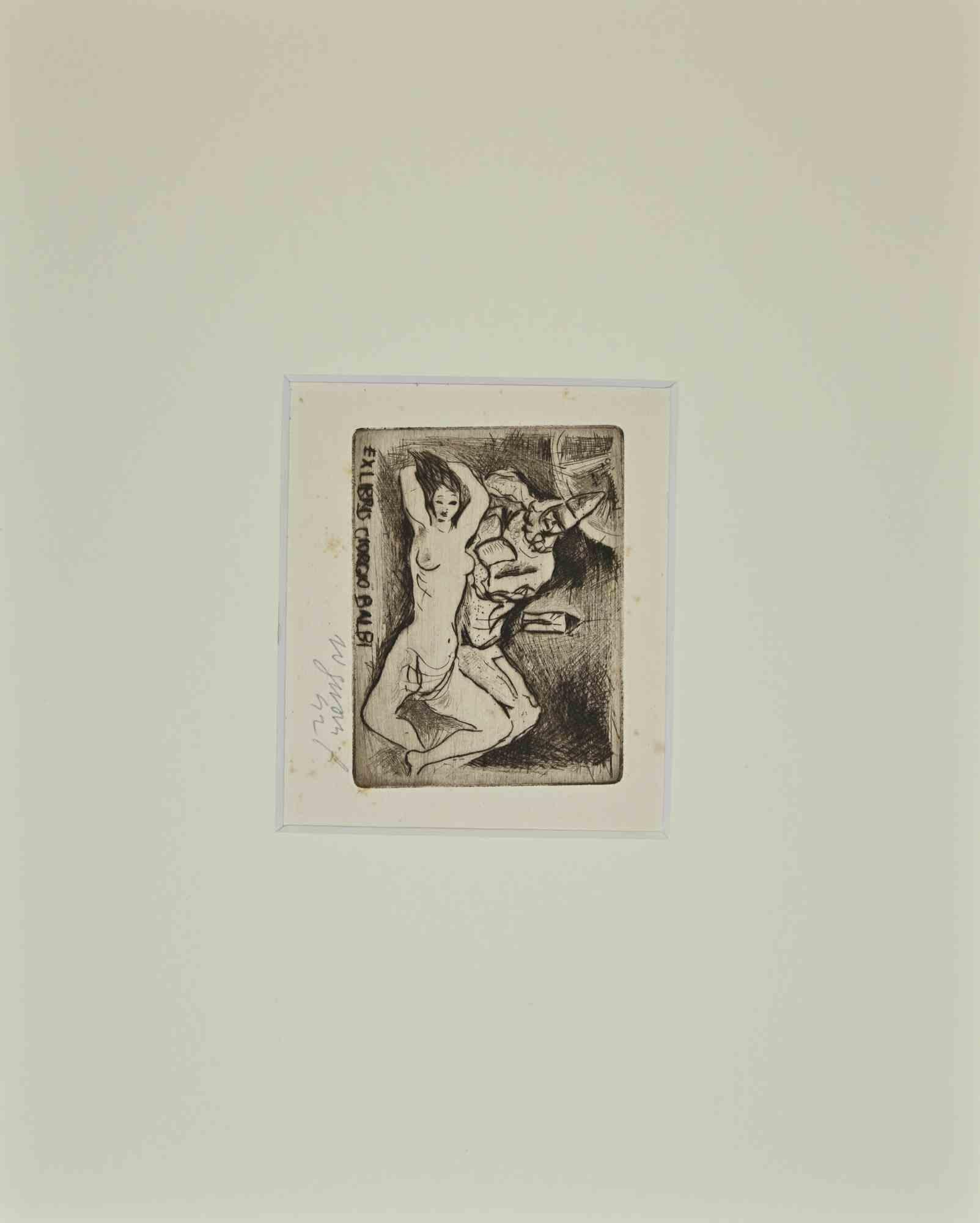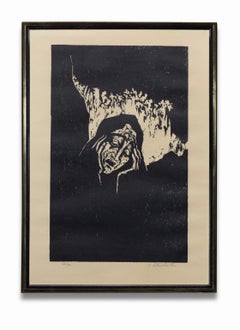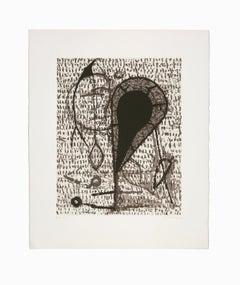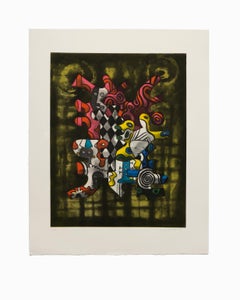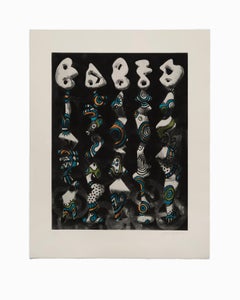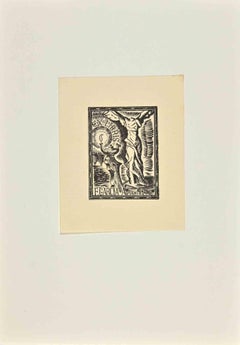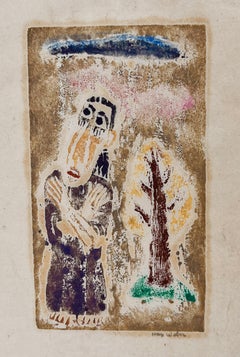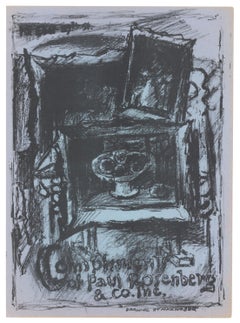Items Similar to Max Weber Woodcut Print from "Primitives" Poetry Book Signed
Want more images or videos?
Request additional images or videos from the seller
1 of 9
Max WeberMax Weber Woodcut Print from "Primitives" Poetry Book Signed1926
1926
$2,800
£2,173.33
€2,476.15
CA$4,001.50
A$4,357.94
CHF 2,297.79
MX$53,005.12
NOK 28,894.61
SEK 27,100.78
DKK 18,490.16
About the Item
ONE WEEK ONLY SALE
This woodcut print is an expressionist print on one of the poems from Max Weber's poetry collection "Primitives: Poems and Woodcuts". This work is signed in pencil by Max Weber in the lower right corner. The print measures at 6.75 x 3.5 inches. This woodcut print was made with brown ink impressed on handmade wove paper. The original poetry book (of which only 350 were printed by Spiral Press) and contained eleven original illustrations from which this one was printed. This print was from a Greeting Card sent by Max Weber and Family for a Christmas and New Year's greeting ca. 1930s.
The poem this print was illustrated for was "Perfection - Greek", which reads:
On the Acropolis at Athens in Greece
Pericles and Phidias the Parthenon built, --
The symbol and pinnacle of Greek beauty and light.
To-day, now, ruined and bewailed
Lies the Acropolis of old.
Endless time it waits,
Again concretely answered to be
With forms less perfect, less final,
Perfection endless to make.
For, alas,
The cold marble colder still became,
In the hands of the all too perfect Greek.
Max Weber was born in 1881 in the Russian Empire. He and his family emigrated to the United States where he studied at the Pratt Institute under the painter and printmaker Arthur Wesley Dow who helped impart some of the influences of Paul Gauguin onto Weber. In 1905 he took up studies at the Académie Julian in Paris where he befriended Henri Rousseau and became influenced by the works of Henri Matisse and Pablo Picasso. He returned to New York in 1909 bringing the bourgeoning Cubist movement with him in his works. While his art found some sucess through the 1940s and 1950s, he turned more toward a interest in his Jewish heritage in his art and away from the early Cubist and Expressionist works that he made his early name on.
His work has been collected and exhibited in the Addison Gallery of American Art, the Art Institute of Chicago, the Berkshire Museum, the Blanton Museum of Art, the Cleveland Museum of Art, the Detroit Institute of Art, the Harvard Art Museums, the Hirshhorn Museum and Sculpture Garden, the Los Angeles County Museum of Art, the Metropolitan Museum of Art, the Museum of Fine Arts, Boston, the Museum of Modern Art, the National Gallery of Art, the Phillips Collection, the Smithsonian American Art Museum, the Thyssen-Bornemisza Museum, the Whitney Museum of American Art, and many more.
- Creator:Max Weber (1881-1961, American)
- Creation Year:1926
- Dimensions:Height: 9.5 in (24.13 cm)Width: 6.5 in (16.51 cm)
- Medium:
- Movement & Style:
- Period:
- Condition:
- Gallery Location:Detroit, MI
- Reference Number:1stDibs: LU128618907562
About the Seller
5.0
Vetted Professional Seller
Every seller passes strict standards for authenticity and reliability
Established in 2014
1stDibs seller since 2019
108 sales on 1stDibs
Typical response time: 17 hours
- ShippingRetrieving quote...Shipping from: Detroit, MI
- Return Policy
Authenticity Guarantee
In the unlikely event there’s an issue with an item’s authenticity, contact us within 1 year for a full refund. DetailsMoney-Back Guarantee
If your item is not as described, is damaged in transit, or does not arrive, contact us within 7 days for a full refund. Details24-Hour Cancellation
You have a 24-hour grace period in which to reconsider your purchase, with no questions asked.Vetted Professional Sellers
Our world-class sellers must adhere to strict standards for service and quality, maintaining the integrity of our listings.Price-Match Guarantee
If you find that a seller listed the same item for a lower price elsewhere, we’ll match it.Trusted Global Delivery
Our best-in-class carrier network provides specialized shipping options worldwide, including custom delivery.More From This Seller
View AllJacob Steinhardt Woodcut Print "Rachel Weeping For Her Children" Signed Numbered
By Jacob Steinhardt
Located in Detroit, MI
“A voice is heard in Ramah, mourning and great weeping, Rachel weeping for her children and refusing to be comforted, because they are no more.” This verse from Jeremiah 31:15 is the subject of this woodcut print by Jacob Steinhardt, depicting Rachel, who was the mother of the tribes of Joshua and Benjamin, and who was the wife of Jacob who was Israel, weeping for her children which is to be understood as after the destruction of the First Temple in Jerusalem, the Israelites were clustered into Ramah, the home of the Benjaminites, before being taken into the Babylonian captivity; Rachel is weeping for the destruction and expulsion of her descendants. This work is exemplary of the Jewish themes of Jacob Steinhardt, a German Jew...
Category
1960s Expressionist Figurative Prints
Materials
Woodcut
"Untitled I", Abstract Etching and Aquatint Lithograph, Signed and Numbered
By Bert Yarborough
Located in Detroit, MI
"Untitled I" is a work that displays Bert Yarborough's experimentation with emotion and monotype in his abstract and expressive style. This print made ...
Category
1990s Abstract Prints
Materials
Etching, Aquatint, Lithograph, Monotype
James Hansen "Untitled III", Abstract Aquatint Etching Lithograph, Signed & No.
Located in Detroit, MI
ONE WEEK ONLY SALE AT 40%
"Untitled III" is a work that displays James Hansen's intense colors and shapes of his abstract and surrealist style. This print made with etching and aquatints with hand-coloring on Arches paper pops with the illusion of three dimensions set against a muted background of esoteric shapes and symbols. The print is 32-3/4 x 25-3/4 inches and is signed and numbered from an edition of 30 by the artist. Numbered edition may not necessarily be number 20 as there are multiple prints in the possession of Collected Detroit.
James Hansen was born in 1951 in New Haven, Connecticut and spent most of his artistic career in Provincetown, Massachusetts where he befriended and worked with Paul Bowen...
Category
1990s Abstract Prints
Materials
Etching, Aquatint, Lithograph
"Untitled I", Abstract Aquatint Color Etching Lithograph, Signed and Numbered
Located in Detroit, MI
"Untitled I" is a work that displays James Hansen's intense colors and shapes of his abstract and surrealist style. This print made with etching and aquatints with hand-coloring on Arches paper pops with the illusion of three dimensions set against a muted background of esoteric shapes and symbols. The print is 32-3/4 x 25-3/4 inches and is signed and numbered from an edition of 30 by the artist. Numbered edition may not necessarily be number 12 as there are multiple prints in the possession of Collected Detroit.
James Hansen was born in 1951 in New Haven, Connecticut and spent most of his artistic career in Provincetown, Massachusetts where he befriended and worked with Paul Bowen, Claude Simard...
Category
1990s Abstract Prints
Materials
Etching, Aquatint, Lithograph
"Travelers", Abstract Drypoint Etching and Aquatint, Numbered and Signed
By Richard Jacobs
Located in Detroit, MI
"Travelers" is a work that displays Richard Jacobs early Balinese influence. This abstract work made with drypoint etching manifests a layer of depth and contrast that is achieved through an Indonesian technique of drawing the lines of the resist or printing it with a copper stamp that allows an artisan to selectively color the work through the soaking process. "Travelers" is exemplary of this earlier aquatint process before Jacobs would go on to apply a diversity of colors to his work. The print is 39 x 29 inches and is signed and numbered from an edition of 30 by the artist. Numbered edition may not necessarily be number 16 as there are multiple prints in the possession of Collected Detroit...
Category
1990s Abstract Prints
Materials
Drypoint, Etching, Aquatint, Lithograph
"Untitled II", Abstract Etching and Aquatint Lithograph, Signed and Numbered
By Bert Yarborough
Located in Detroit, MI
"Untitled II" is a work that displays Bert Yarborough's experimentation with emotion and monotype in his abstract and expressive style. This print made...
Category
1990s Abstract Prints
Materials
Etching, Aquatint, Lithograph, Monotype
You May Also Like
Max Weber, Figure
By Max Weber
Located in New York, NY
One of America's great modernist innovators, Max Weber carved Figure, 1919-20, on the end piece of a wooden cigar box. This Cubist image is composed o...
Category
Early 20th Century Modern Figurative Prints
Materials
Woodcut
Ex Libris - F.Garcia Aipuente - Woodcut - Mid 20th Century
Located in Roma, IT
Ex Libris - F.Garcia Aipuente is a Modern Artwork realized in Mid 20th Century.
Ex Libris. B.W. woodcut on paper.
The work is glued on cardboard.
Total dimensions: 21x 15 cm....
Category
Mid-20th Century Modern Figurative Prints
Materials
Woodcut
Invocation
By Max Weber
Located in New York, NY
M a x W e b e r – – 1 8 8 1 – 1 9 6 1
Invocation- – 1919-20, Color Woodcut.
Rubenstein 27. Proofs only. Signed in pencil.
Image size 3 3/4 x 2 1/8 inches (124 x 54 mm); sheet size ...
Category
1910s Cubist Figurative Prints
Materials
Woodcut
$13,500
original lithograph
By Max Weber
Located in Henderson, NV
Medium: original lithograph. This lithograph is from the rare 1951 "Improvisations" portfolio, published by the Artists Equity Association of New York on the occasion of the 1951 Spr...
Category
1950s Prints and Multiples
Materials
Lithograph
Western - Woodcut by Mino Maccari - Mid-20th Century
By Mino Maccari
Located in Roma, IT
Western is an Artwork realized by Mino Maccari (1924-1989) in the Mid-20th Century.
Colored woodcut on paper. Hand-signed on the lower, numbered 1/89 specimens and titled on the le...
Category
Mid-20th Century Modern Figurative Prints
Materials
Woodcut
Ex Libris Giorgio Balbi - Woodcut - Mid-20th Century
By Franco Rognoni
Located in Roma, IT
Ex Libris Giorgio Balbi is an artwork realized by Franco Rognoni, in 1942.
Etching, 9 x 10 cm; It includes passepartout 24 x 30 cm.
Handsigned and dated bottom right.
Good condit...
Category
1940s Modern Figurative Prints
Materials
Paper, Woodcut
